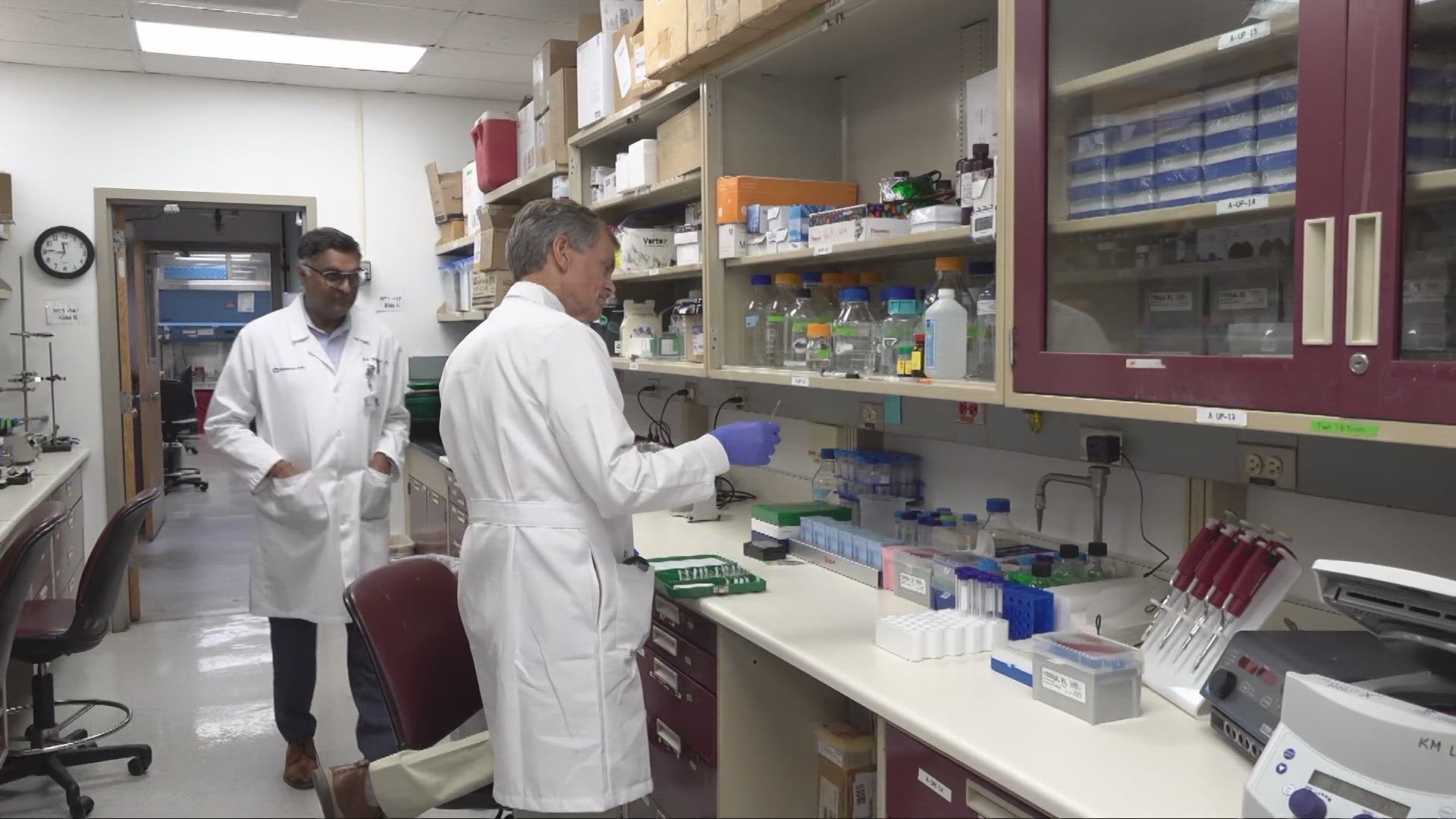CLEVELAND — Cleveland Clinic’s VeloSano Bike to Cure event has raised nearly $40 million for cancer research in the last ten years.
But where exactly does the money go?
VeloSano funds cancer research in its infancy. Those ideas that may be brilliant, but without adequate funding for supplies and researchers, likely would never even make it into a lab for further study.
One of those projects may save the lives of cancer patients who are at risk of a deadly complication.
Regenia Lane is a breast cancer survivor, but it wasn't her aggressive cancer that nearly killed her. It's what happened while she was recovering from a mastectomy.
“It was just extreme, constant pain. It wouldn't go away no matter what I did, no matter what medication they gave me, and they tried quite a few, but none of them seem to do anything to help me,” Regenia recalls.
Fortunately, she was still in the hospital recovering when she developed a blood clot in her lung. It’s a well-known risk of surgery and African Americans are generally at higher risk for clotting, known as thrombosis.
But what you might not realize is that the clotting risk is also very real for cancer patients being treated with chemotherapy or immunotherapy.
Cancer-associated thrombosis is the second leading cause of death in patients with cancer.
“Thrombosis is a major problem in cancer patients and up to 20% of cancer patients can die from thrombosis, that’s one in five.” said Cleveland Clinic hematology and medical oncologist, Keith McCrea, MD.
Blood clots happen when blood goes from a liquid to a solid state, known as thrombus. You may have heard it described with different names such as a pulmonary embolism which is found in the lungs. Deep Vein Thrombosis, or DVT, which typically happens in the legs and stroke, in the brain, just to name a few.
Dr. McCrea and Dr. Alok Khorana spent the last decade trying to find biomarkers that signal a higher risk for thrombosis during cancer treatment.
“We’ve identified a number of [biomarkers] and we don’t really know what their relationship is biochemically to blood clotting, but they were clearly elevated, so we’re doing more validation studies and ultimately, we hope to identify things in blood that can let us treat at risk cancer patients with preventative measures to prevent blood clots,” Dr. McCrea said.
Where would this research be without VeloSano funding?
“Probably nowhere, because a lot of research is dependent on generating preliminary data,” said, Alok Khorana, MD, also a Cleveland Clinic hematology and medical oncologist.
VeloSano funding allowed them to prove their science was worth more research and deserved a grant from the National Institutes of Health, which isn’t easy to get.
“You can’t get it without preliminary data, it’s just impossible because only one in ten grants are funded at this point,” Dr. Khorana said.
Their early research developed a clinical risk score, based on basic patient information found in the electronic medical record. Local cancer patients already benefit from this.
“Those effects are immediately available to the Cleveland community, the risk calculation for instance, Cleveland Clinic is one of three hospitals in the country that’s doing it,” Dr. Khorana said.
It’s called the ‘Khorana Score’ and yes, it’s named after Dr. Khorana.
“We were able to actually put it in the record where it's calculated automatically and the patient's oncologist knows this patient is at high risk for getting blood clots and potentially you can prescribe them a blood thinner to reduce the risk of a blood clot,” Dr. Khorana said.
During their research, they also discovered immunotherapy was associated with thrombosis. They were the first to report this as well as identify potential mechanisms.
They hope the future is a simple blood test that would tell them for sure that a patient will develop blood clots. While they’ve been at it for eight years, both researchers say VeloSano funding saved them years of research time.
“Easily cut research time in half, but probably cut 70% thanks to VeloSano, just because having the personnel and the funds available to do the studies, without it, I’m not sure it ever would have gotten off the ground,” Dr. McCrea said.
Dr. Khorana adds that VeloSano funding also helps younger researchers, who typically have to wait years, get their projects started.
“A lot of research is done by young people and to keep young people in the community, we need to provide them with funding to get started,” Dr. Khorana said.
When they’re finished validating the biomarker science, Cleveland will see it first.
“We've narrowed down which cancer patients are at high risk for getting blood clots. We're hopeful that the biomarker data that we generate, as well as this new ground that we have on immunotherapy and blood clots that could potentially generate more results, I think we're very close to bedside,” Dr. Khorana said.
Who knew that two wheels and pedal power could bring a community together and push science faster down the road?

